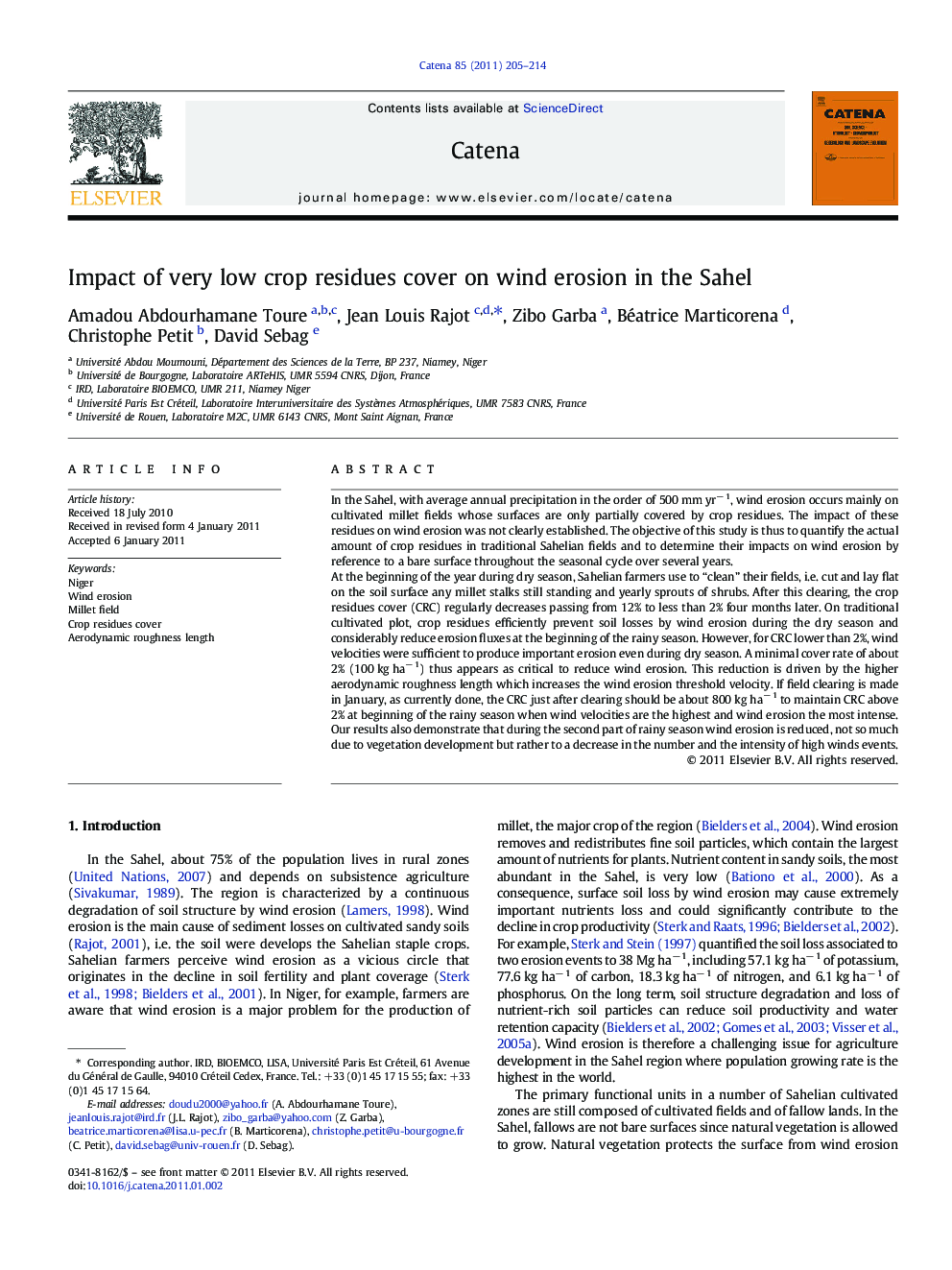| Article ID | Journal | Published Year | Pages | File Type |
|---|---|---|---|---|
| 4571994 | CATENA | 2011 | 10 Pages |
In the Sahel, with average annual precipitation in the order of 500 mm yr− 1, wind erosion occurs mainly on cultivated millet fields whose surfaces are only partially covered by crop residues. The impact of these residues on wind erosion was not clearly established. The objective of this study is thus to quantify the actual amount of crop residues in traditional Sahelian fields and to determine their impacts on wind erosion by reference to a bare surface throughout the seasonal cycle over several years.At the beginning of the year during dry season, Sahelian farmers use to “clean” their fields, i.e. cut and lay flat on the soil surface any millet stalks still standing and yearly sprouts of shrubs. After this clearing, the crop residues cover (CRC) regularly decreases passing from 12% to less than 2% four months later. On traditional cultivated plot, crop residues efficiently prevent soil losses by wind erosion during the dry season and considerably reduce erosion fluxes at the beginning of the rainy season. However, for CRC lower than 2%, wind velocities were sufficient to produce important erosion even during dry season. A minimal cover rate of about 2% (100 kg ha− 1) thus appears as critical to reduce wind erosion. This reduction is driven by the higher aerodynamic roughness length which increases the wind erosion threshold velocity. If field clearing is made in January, as currently done, the CRC just after clearing should be about 800 kg ha− 1 to maintain CRC above 2% at beginning of the rainy season when wind velocities are the highest and wind erosion the most intense. Our results also demonstrate that during the second part of rainy season wind erosion is reduced, not so much due to vegetation development but rather to a decrease in the number and the intensity of high winds events.
Research Highlights► Below a threshold of 2% of crop residues cover, Z0 decreases dramatically fields. ► Crop residues cover of 2% corresponds to a residues density of 100 kg ha− 1. ► Above this threshold, potential wind erosion is reduced by at least a factor of 3. ► Meteorological changes explain the end of erosion by mid July in the Sahel.
